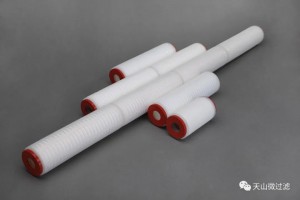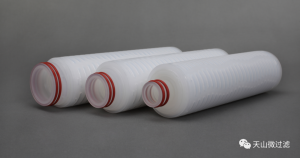The most prominent property of polypropylene is its multifaceted nature, which can be suitable for many processing methods and applications. Its value and versatility come from excellent chemical resistance, the lowest density and highest melting point among bulk thermoplastics, and moderate cost.
Chemistry and Properties
Polypropylene (PP) differs from polyethylene (PE) in that it has a methyl group on every other carbon atom, which acts to harden the chain. Unless the methyl groups are on the same side of the chain, the polymer won’t crystallize. Until Natta and Ziegler (independently of each other) developed stereotactic catalysts, only soft, adherent random constructs of polypropylene could be produced. Commercial plastics derive their hardness and solubility from their crystallinity. The chain of PP is harder than that of PE, so PP has higher melting temperature and tensile strength, but lower crystallinity. The melting point of PP homopolymers is approximately 330°F, depending on the heating rate and thermal history.
By intercalating ethylene (random copolymerization) into the PP chain at intervals, the chain becomes less regular and softer, reducing the crystallinity, modulus, melting point, and sharpness of the polymer. Typical random copolymers are relatively transparent and have melting points in the range of 293 to 305°F. When the ethylene content increased, the crystallinity of the polymer became lower and lower, and finally became ethylene – propylene rubber (EPR).
Another important class of copolymers is impact resistant heterogeneous copolymers. These products are prepared by polymerization of rubber (sometimes PE) in a homopolymer matrix. The rubber used is usually EPR, which generates a phase separated from the homopolymer matrix to form a luminous fog. Translucent appearance. These materials are not true block copolymers because the rubber phase can be removed by solvent. Similar products can be obtained by blending EPR with PP. The impact resistant copolymer has a melting point similar to that of the homopolymer.
Molecular weight and molecular weight distribution are very important in PP processing. Melt flow at 446T and 4.75 lb is an index of melt viscosity, which is related to the weight average molecular weight. Melt flows of commercial polypropylene range from as low as 0.25 g /10 min to as high as 800 g /10 min. Molecular weight distribution is expressed as the ratio of weight average molecular weight to number average molecular weight, which can be as high as 11 for PP with high crystallinity. The PP used as melt blown fabric can be as low as 2.1. This ratio is very important in fiber spinning and affects extrusion, extrudate swelling, internal stress and orientation in molding.
Like most polymers, polypropylene oxidizes, especially during melting processing. In the case of PP, polymers are protected by scavenging free radicals that attack tertiary hydrogen. For PP used for a long time at high temperature, a complex multi-component stabilizer system is used; For situations where odors or tastes are restricted, the stabilization system must be very simple. If used for sun protection (ultraviolet) can be added to carbon black or special stabilization method.
The tensile strength of ordinary PP is 34.5mpa, and the bending modulus is about 1723MPa. There are glass filled grade PP with tensile strength of 100MPa and bending modulus of 9650MPa. The bending modulus of mineral-filled PP can be as high as 4480MPa, but the tensile strength does not increase much. It remains malleable below -75°F. Impact resistant copolymers with tensile strength as low as 186MPa and bending modulus as low as 689MPa are not recent varieties. Modern polymerization processes can produce materials that fill the gap between polypropylene and olefin rubber.
In addition to strong oxidants and non-polar solvents, PP is highly resistant to chemical erosion. For example, fuming nitric acid or hot concentrated sulfuric acid can degrade PP, but less concentrated solutions are harmless to PP. Liquid such as gasoline, xylene and chlorinated hydrocarbons can cause PP to swell and become soft. The swelling degree of copolymers is higher than that of homopolymers. When PP is removed from such solvents, its size will return to its original state. Because the surface of PP is extremely inert, if you do not use flame treatment or similar technology, it is difficult to print, paint and glue on PP Polypropylene combustion heat is very high, it is difficult to make flame retardant products, but there are several grades of flame retardant PP sold on the market. PP is also an excellent electrical insulator, its dielectric constant and loss factor is very low. It’s good for moisture resistance, but it’s not a good barrier to oxygen.
Post time: Aug-02-2022



